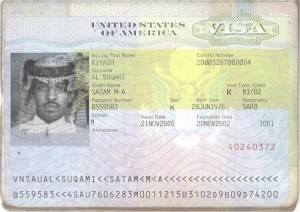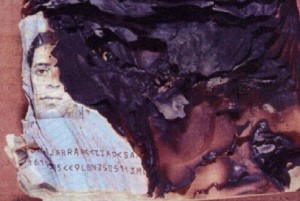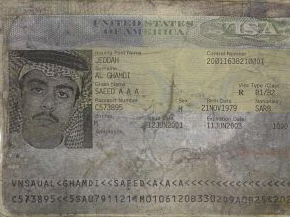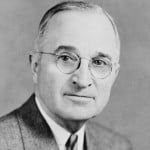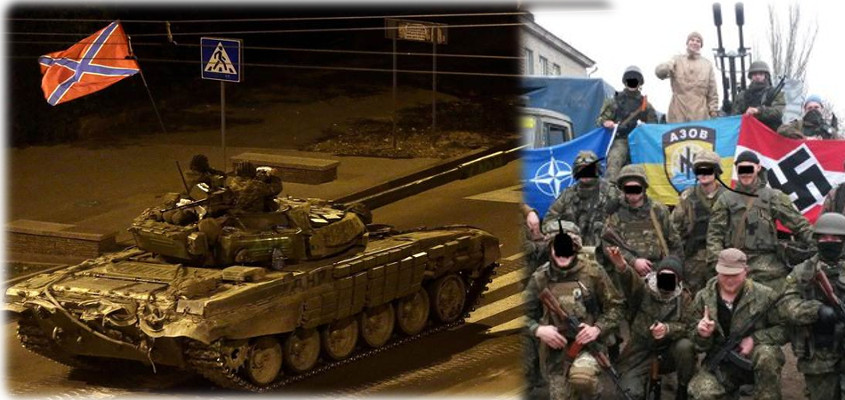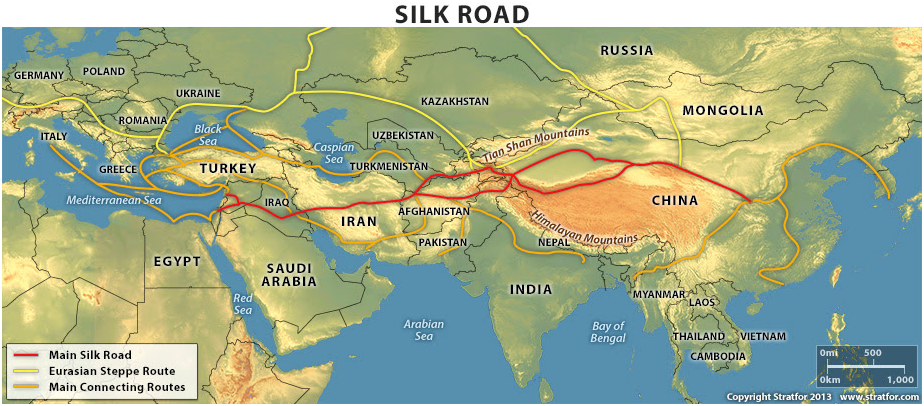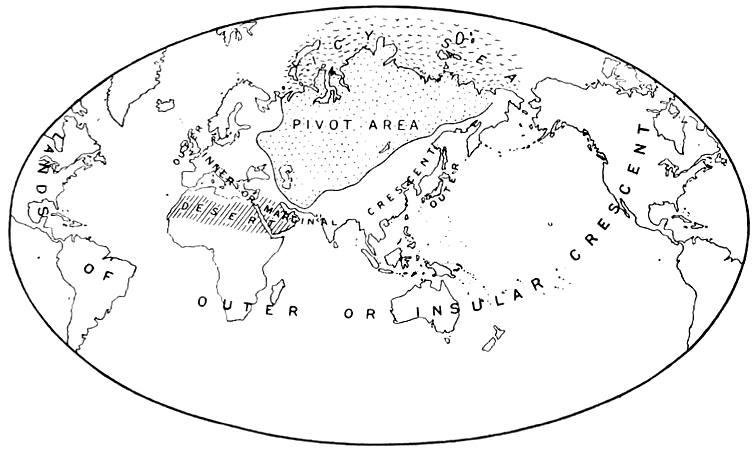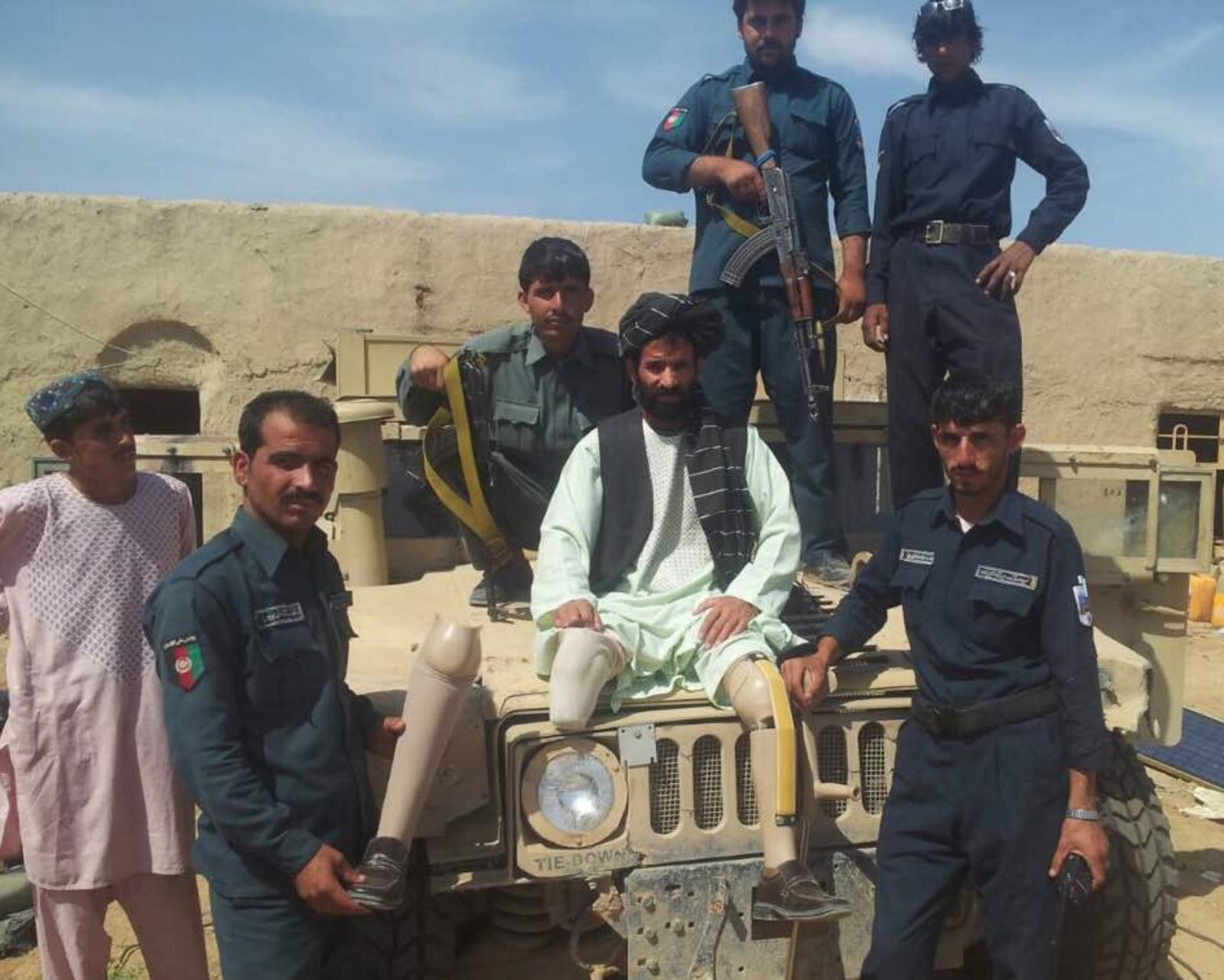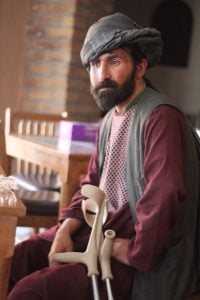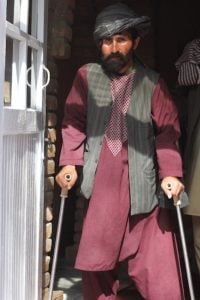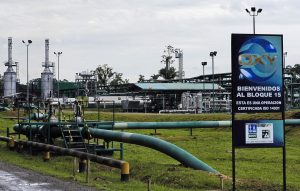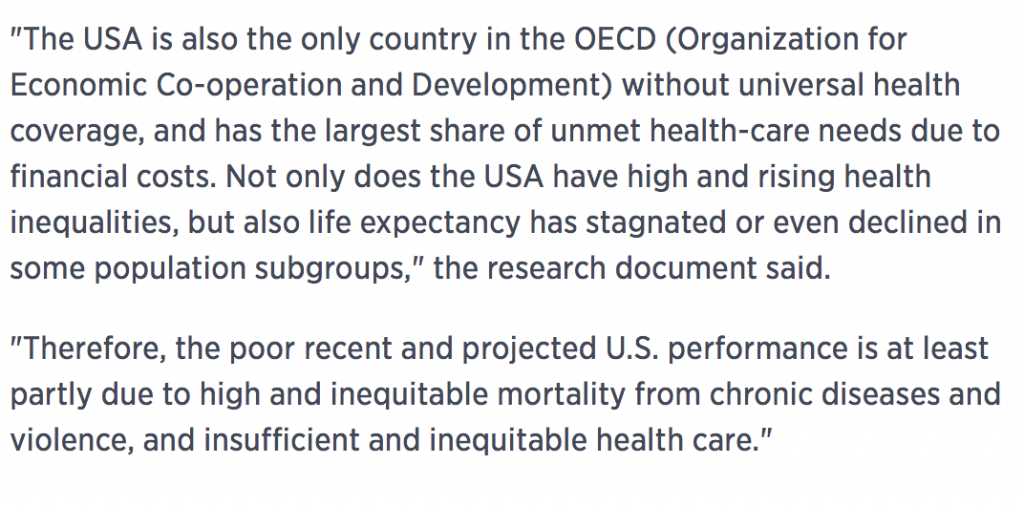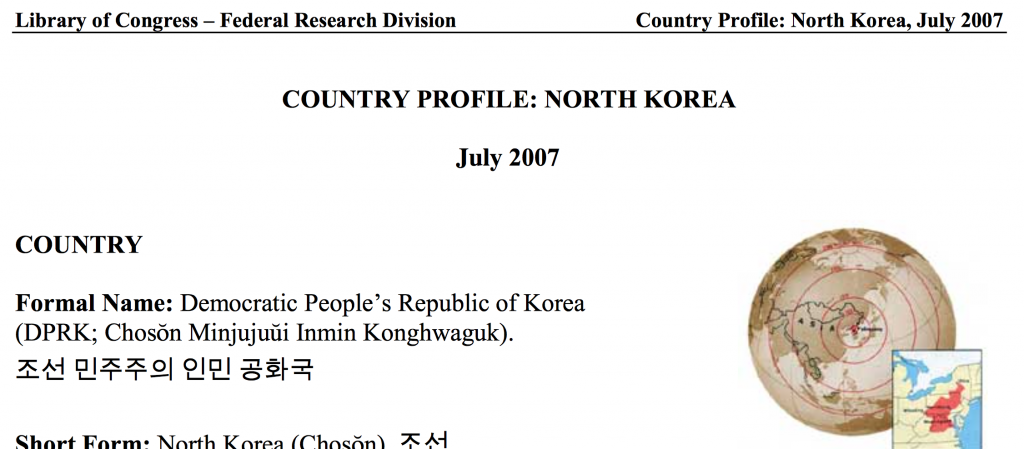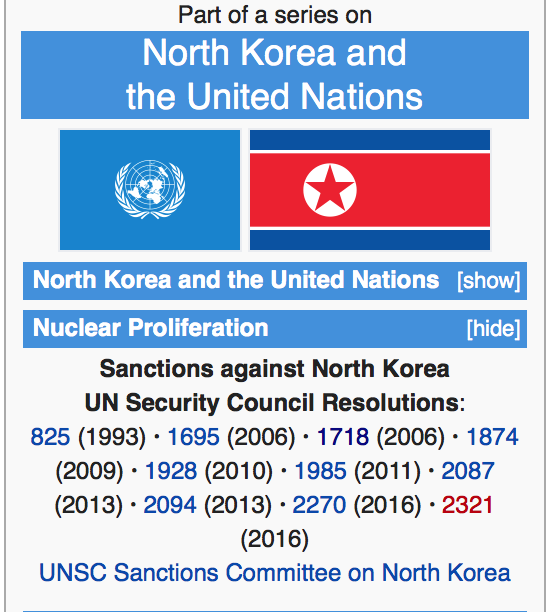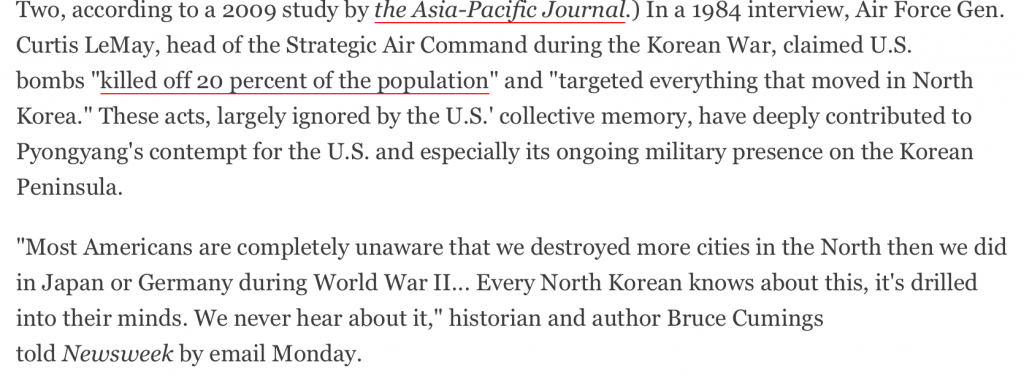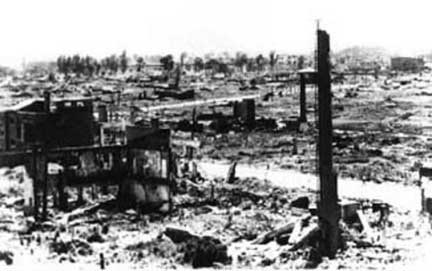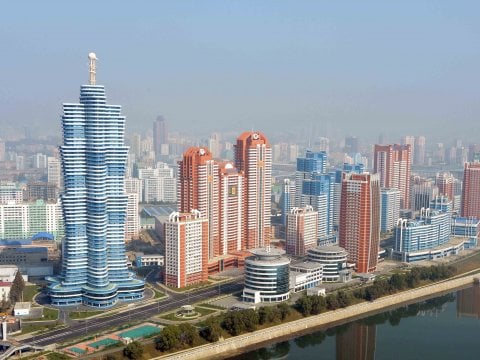Q: If Donald Trump, the Commander in Chief of the US Military, is Historically, Theologically and Morally Blind and Also Scientifically Illiterate, Should He be Making Life and Death Decisions for the Planet?
“We have grasped the mystery of the atom and rejected the Sermon on the Mount. Ours is a world of nuclear giants and ethical infants. We know more about war than we do about peace – more about killing than we do about living.” — WWII General Omar Bradley
“If (Japan does) not now accept our terms they may expect a rain of ruin from the air, the likes of which has never been seen on this earth.” – US President Harry S. Truman (August 6, 1945)
“North Korea best not make any more threats to the United States…(If they do) they will be met with fire and fury…the likes of which this world has never seen before.” – US President Donald J. Trump (August 8, 2017)
***
On the eve of the anniversary of the United State’s nuclear annihilation of the Christian community of Nagasaki on August 9, 1945, Donald Trump threatened the nuclear destruction of North Korea (including the deaths of thousands or millions of innocents) in ways more devastating than even the nuclear annihilation of Hiroshima and Nagasaki.
The multibillionaire Donald J. Trump, being an over-privileged “Golden Boy” son of a multimillionaire, a narcissist, a sexual predator, a serial liar and an exploitative casino mogul with mob connections, was probably destined to become historically, theologically, morally and scientifically illiterate. It would have been very unusual for someone growing up in that trajectory to turn out otherwise.
Donald Trump is widely acknowledged to have the temperament of an arrogant schoolyard bully with the attitude of a “know-it-all” teen-ager who has no self-awareness that he is factually ignorant of many of the things one would expect of a business or political leader. Wealthy megalomaniacs surround themselves with obedient sycophants who are afraid to tell them the truth about their ignorance, and Trump is no exception.
Trump’s upbringing and adult life experiences allowed him to suffer very few appropriate punishments for his unethical behaviors, sexual conquests and bankruptcy proceedings. His worshipful celebrity status and financial successes have left him with dangerous character traits that include megalomania, sociopathy, narcissism and paranoia, as he has proven over and over again during his campaign rallies and his desecration of the Oval Office.
Trump’s Cozy Relationship with Racists, Militarists and Christian Dominionists
But what is perhaps most dangerous for the planet and for America is his obvious tolerance of – and even advocacy for – white supremacism, American exceptionalism, militarism, sexism and fascism/racism, filling his White House and cabinet with a strange combination of white supremacists and ethically infantile multimillionaires, corporate elites, pro-war militarists, American imperialists and assorted other power-mongers like those of a Christian Dominionist persuasion that could meet the definition of “christofascist” (look it up).
Christian Dominionists have internalized into dogma the many writings of one of the so-called “Christian Reconstructionist” gurus, R. J. Rushdoony (and his Chalcedon Foundation) and they are working tirelessly (and secretly) to recruit and train future political leaders for the time when an American Christian Fundamentalist plurality will reject democracy and create a theocratic nation that will be ruled by a tribunal of punitive male Christian elders – who will institute “sharia-like” Old Testament Law that includes 18 new capital crimes (as prescribed in the “inerrant” Old Testament).
Many Dominionist “christians” joined white supremacists, Neo-Nazis and the KKK (a far right-wing “Christian-based” cult) in voting for Trump. Many of them have been indoctrinated since childhood into believing in the mythical and non-biblical “Rapture theory” that will occur at the end of time. They believe that the Rapture will save them from the “fire and fury” that is described in the “inerrant” book of Revelation – where non-believing heretics will be “left behind” to suffer horribly as the earth is destroyed by a wrathful god. (Rushdoony’s philosophy was that their wrathful god has given white male Christians dominion over the earth [which includes the animals, the land, the water, women, and all the heathen nations] and that a theocratic government, operating according to Old Testament Law is God’s will. Hard-core dominionists believe that democracy is apostasy and that only Christians should be able to vote.
(Read more at www.theocracywatch.org
or read the comprehensive article at:
http://www.patheos.com/blogs/unreasonablefaith/2009/05/r-j-rushdoony-reconstructionist-and-racist-bigot/#z0luYlZdblfpUHKv.99)
Many of those who have been gradually and often secretly grabbing political power at national, state and local levels have supported policies that are proto-fascist.
Some of them are in Trump’s circle (perhaps unbeknownst to him) and are also in favor of the first use of nuclear weapons.
Some of them have access to the nuclear codes (including Christian Dominionist Mike Pence if and when Trump is physically or mentally incapacitated or permanently impeached).
To Trump’s Christian Dominionist Supporters, Nuclear Holocaust and Armageddon Might be Equivalent
What should really worry every thinking person is that none of the imposters in the White House seem to have any awareness of the concept of “nuclear winter”, although “nuclear holocaust” might just be close enough for Christian Dominionists to represent a substitution for their long-anticipated and sometimes desired Armageddon.

White supremacists rallying in Charlottesville, Virginia (Source: Pinterest)
Looking beyond the implications of the significant portion of right-wing (both ‘christian” and non-christian) voters that constitute Trump’s voting base the NeoNazi and KKK Trump voters raised their ugly heads at Charlottesville, Virginia a few days ago. Three weeks earlier (on July 27, 2017) the commander of the US Pacific fleet, US Navy Admiral Scott H. Swift, stated that he would obediently order the launch of a nuclear strike against China if President Trump ordered it.
All this is happening partly because of the artificial, media-enhanced, fake “crisis” that has been orchestrated between two saber-rattling, third-rate megalomaniacal wannabe dictators that have the legal (but not the ethical) right and ability to order the use of nuclear weapons to target and kill innocent bystanders and their homes and places of employment and permanently poison the earth and the oceans.
Blow-Back
Neither megalomaniac has expressed any awareness of the concept of “blow-back” that the World War I poison gas artillerymen first experienced when they shot their chlorine gas and mustard gas shells at the enemy and saw the wind change direction 180 degrees.
Of course, what the major media that are fanning the so-called “North Korean” crisis (that has no realistic military solution, according to the Pentagon) is that North Korea may not have the guided missile technology that is precise enough to hit targets smaller than the Sea of Japan. (Note: Authorities say that North Korea’s most recent and most powerful ”intercontinental” ballistic missile only traveled 580 miles and was in the air for only 39 minutes, but in order to strike the US, an ICBM would need a range of at least 4,800 miles.)
Wars and Rumors of War can be Good Investment Opportunities
Of course profiteers that have special interests and investments in war industries would like to see a bump up of another highly profitable arms race. Think of the money to be made by investing in weapons industries just before a president declares war! Think of the job security and pension enhancement of the career officer classes when somebody in the White House is a Hawk! (Think corporate Wall Street/DOW-Jones Industrial entities like Lockheed Martin, Boeing, General Dynamics, Northrup Grumman, etc and governmental War Street entities like the DOD, STRATCOM, AFRICOM, the Joint Chiefs of Staff, the DOE, Seal Team Six, Blackwater [and the many other privatized mercenary corporations that profit from war]).
There are thousands of for-profit corporations whose paymasters fund well-positioned lobbyists that know all the legal and illegal tricks of bribing US politicians, influencing various governmental bodies and paying off major media outlets with their lucrative, the current one in the form of warning everybody that US coastal cities are in danger of being hit by a North Korean missile. But, of course, the chance of a precise missile strike from the Korean peninsula to a US city none or zero for North Korea’s third-rate military machine, and such a possibility is far less likely to happen than would be an accidental firing of a US nuclear missile in a provocative war game scenario. Sadly, the news-consuming public can be easily manipulated into believing any and all of the propaganda that comes out of the mouths of alleged authority figures that have a podium, pulpit or microphone and have the capability of convening a press conference.
False Flag Ops Can Bolster Failing Presidencies
Manufactured crises can be expected to temporarily save failing presidencies, and so false flag operations are trusted components of any president’s political strategy, as is also true when a nation’s power elite sees its hidden agendas threatened. (Ex: the assassination of JFK averted the possibility of America’s withdrawal from Vietnam; the Kuwait “invasion” by Saddam Hussein that was allowed to happen by the US State Department and the US invasion of Iraq temporarily boosted George H. W. Bush’s popularity; the missile attacks in Sudan and Afghanistan boosted Bill Clinton’s popularity; the dramatic controlled demolitions of the three World Trade Center Towers on 9/11/01 and the subsequent illegal invasion and war in Afghanistan (that predictably spread to Iraq, to Syria, Libya and beyond, boosted George W. Bush’s popularity; the alleged killing of Osama bin Laden (who had been documented to have already died in 2002) temporarily boosted Barack Obama’s (and Hillary Clinton’s) popularity; the Cruise missile barrage against Syria temporarily boosted Trump’s poll numbers; and an orchestrated war crisis against North Korea will surely obscure – and possibly save – Trump’s failing presidency).
Harry Truman May Have Been Scientifically Illiterate, but he Wasn’t Historically Illiterate
In 1945 US President Harry Truman was far from historically illiterate, but he was surely scientifically ignorant about anything related to nuclear power or what was the impact of radioactive nuclear weapons materials like uranium and plutonium, or the fall-out waste products like radioactive strontium, cesium, iodine, etc on the bodies of actual humans that are downwind from Ground Zero.
In the case of nuclear weapons, President Franklin Delano Roosevelt and his military planning commissions had kept Vice President Truman entirely in the dark about the Manhattan Project. Truman’s first information about nuclear weapons happened right after he took the oath of office after FDR’s death, April 12, 1945. At the time VE Day was still a month away
The original target for the military planners that funded the Manhattan Project was the fascist Third Reich and Adolf Hitler’s Deutschland Uber Alles imperialist agenda that coveted the resources outside its borders that, if stolen, could make Germany Great Again. The original intention to drop the bombs on Germany energized the many brilliant Jewish scientists that had signed up to develop them, although some of them had second thoughts when they were dropped on civilian targets in Japan,
But the war in the European theater ended before the bombs were ready to be deployed, and so, rather than abandoning the project (too much momentum and money spent to stop it) and to justify the tens of billions of dollars spent (in 2017 dollar equivalence) in developing and delivering the bombs, Japanese cities became the targets, even though both sides knew that Japan had already lost the war.
So in view of the above, it seems appropriate to point out some of the hidden history of Nagasaki and the war crimes that the US military planners committed against non-combatants in Japan on the 72nd anniversary of the day that will forever live in infamy. Please see my 2016 Duty to Warn column on the history of the Nagasaki bombing by googling “Christianity and the Nagasaki Bombing” or read here.
The following quotes are appropriate words of wisdom that speak to the following three Trump administration moral crises:
1) The NeoNazi, KKK and White Supremacist power and influence in Donald Trump’s White House;
2) The ill-conceived saber-rattling of the historically illiterate, ignorant, amoral and too-powerful Donald Trump; and
3) the threat of a gradual Christian Dominionist take-over of the US government by the likes of smiley-faced, christofascist wolves in sheep’s clothing like Mike Pence, Ted Cruz, Mike Huckabee (and presumably also Sarah Huckaby Sanders), Sarah Palin, Michelle Bachmann, Pat Robertson, Jerry Falwell, Tim LaHaye, James Dobson, D. James Kennedy, Michael Huckaby, Gary North, Francis Schaeffer, Paul Hill (the infamous Planned Parenthood murderer), etc, etc. (For more, google “Theocracy Watch”.)
The quotes below are from courageous thinkers that have seen through the propaganda that has spawned and then perpetuated the nefarious agendas of yesteryear’s corporate-controlled media, corporate-controlled politics, corporate-controlled advertising and our corporate-controlled government.
These quotes are intended as teaching tools for peace and justice and anti-fascist activists and as learning opportunities for citizens who may be in lukewarm support of the agendas of the war-mongers in the US Congress, the White House, the Pentagon and the Mainstream Corporate-controlled Media. Hopefully they will also be read by the various cheerleaders for war everywhere and by the multitude of war profiteers on Wall Street, War Street and in the Oval Office.
NOTE: the list of antifascist quotes below does not contain quotes from Christian Dominionists or White Supremacists. Those quotes can be obtained elsewhere. This list contains 4,400 words. For Duluth Reader readers, the entire list of quotes will be archived at:
http://duluthreader.com/articles/categories/200_Duty_to_Warn
Quotes by Courageous Anti-Fascists
“A country that has dangled the sword of nuclear holocaust over the world for half a century and claims that someone else invented terrorism is a country out of touch with reality.” — John K. Stoner, co-founder of Every Church A Peace Church (2001)
“As a physician, I contend that nuclear technology threatens life on our planet with extinction. If present trends continue, the air we breathe, the food we eat, and the water we drink will soon be contaminated with enough radioactive pollutants to pose a potential health hazard far greater than any plague humanity has ever experienced.” — Dr. Helen Caldicott
“Aggressive militarization under the rubric of defense against terrorism threatens to provoke a chain reaction among nuclear nations, big and small, that, once set in motion, may prove impossible to control. No military confrontation anywhere in the world is free from this ominous and ever-present danger.” — Helen Caldicott, from “The New Nuclear Danger” (2002)
“Conceit, arrogance and egotism are the essentials of patriotism. Patriotism assumes that our globe is divided into little spots, each one surrounded by an iron gate. Those who had the fortune of being born on some particular spot, consider themselves better, nobler, grander and more intelligent than the living beings inhabiting any other spot. It is, therefore, the duty of everyone living on that chosen spot to fight, kill and die in the attempt to impose his superiority upon all others.” — Emma Goldman
“Behind the ostensible government sits enthroned an invisible government owing no allegiance and acknowledging no responsibility to the people. To destroy this invisible government, to befoul the unholy alliance between corrupt business and corrupt politics is the first task of the statesmanship of the day.” — Theodore Roosevelt (1906)
“The President is merely the most important among a large number of public servants. He should be supported or opposed exactly to the degree which is warranted by his good conduct or bad conduct, his efficiency or inefficiency in rendering loyal, able, and disinterested service to the Nation as a whole. Therefore it is absolutely necessary that there should be full liberty to tell the truth about his acts, and this means that it is exactly necessary to blame him when he does wrong as to praise him when he does right. Any other attitude in an American citizen is both base and servile. To announce that there must be no criticism of the President, or that we are to stand by the President, right or wrong, is not only unpatriotic and servile, but is morally treasonable to the American public.” — President Theodore Roosevelt (who sometimes talked like an anti-fascist, but who often acted otherwise) from an editorial for the Kansas City Star (May 7, 1918)
“We were constantly told by our friends, ‘Who were we to differ with able statesmen, with men of sensitive conscience who also absolutely abhorred war, but were convinced that this war for the preservation of democracy would make all future wars impossible, that the priceless values of civilization which were at stake could at this moment be saved only by war?’ But these very dogmatic statements spurred one to alarm. Was not war in the interest of democracy for the salvation of civilization a contradiction of terms, whoever said it or however often it was repeated?” — Jane Addams, Nobel Peace Prize Winner and Founder of Hull House; from “Personal Reactions During War” (1922)
“A nation can survive its fools – even the ambitious. But it cannot survive treason from within. An enemy at the gates is less formidable, for he is known and he carries his banners openly. But the traitor moves among those within the gate freely, his sly whispers rustling through all the galleys, heard in the very hall of government itself. For the traitor appears not a traitor — he speaks in the accents familiar to his victims, and wears their face and their garment, and he appeals to the baseness that lies deep in the hearts of all men. He rots the soul of a nation — he works secretly and unknown to undermine the pillars of a city — he infects the body politic so that it can no longer resist. A murderer is less to be feared.” — Cicero (42 BC)
On some great and glorious day the plain folks of the land will reach their heart’s desire at last, and the White House will be adorned by a downright moron.” — H. L. Mencken – Baltimore Sun (1920)
“…the whole aim of practical politics is to keep the populace alarmed (and hence clamorous to be led to safety) by an endless series of hobgoblins, most of them imaginary.” — H. L. Mencken (1922)
“No one ever became poor underestimating the intelligence of the American consumer.” — H. L. Mencken
“The men the American people admire most extravagantly are the most daring liars; the men they detest most violently are those who try to tell them the truth.” — H. L. Mencken
”Certified lunatics are shut up because of their proneness to violence when their pretensions are questioned; the uncertified variety are given the control of powerful armies, and can inflict death and disaster upon all sane men within their reach.” — Bertrand Russell
“From whence shall we expect the approach of danger? Shall some trans-Atlantic military giant step the earth and crush us at a blow? Never. All the armies of Europe and Asia…could not by force take a drink from the Ohio River or make a track on the Blue Ridge in a thousand years. No, if destruction be our lot we must ourselves be its author and finisher. As a nation of free men we will live forever or die by suicide.” — Abraham Lincoln
“Thank God for Democracy Now! Journalism is almost dead as we move into this Neofascist age. And thank god you all are still willing to tell the truth. I think Trump is already betraying working people in terms of making sure that Wall Street is in the driver’s seat. And what I mean by that is that in an emerging Neofascist moment, you have the rule of big business, which is big banks and big corporations (who control what the mainstream media is allowed to report).” — Cornel West
“Neofascists scapegoat the most vulnerable. It could be Muslims, Mexicans, gay brothers, lesbian sisters, indigenous peoples, black peoples, Jews, and so on. And then they also have militaristic orientations around the world. …Under a Trump administration….it’s clear that the One Percent are still running things.” — Cornel West
“The politicians are put there to give you the idea that you have freedom of choice. You don’t. You have no choice. You have owners. They own you. They own everything. They own all the important land. They own and control the corporations. They’ve long since bought and paid for the Senate, the Congress, the state houses, the city halls. They got the judges in their back pockets and they own all the big media companies, so they control just about all of the news and information you get to hear. They got you by the balls. They spend billions of dollars every year lobbying. Lobbying to get what they want.
“Well, we know what they want. They want more for themselves and less for everybody else, but I’ll tell you what they don’t want. They don’t want a population of citizens capable of critical thinking. They don’t want well-informed, well-educated people capable of critical thinking. They’re not interested in that. That doesn’t help them. That’s against their interests.
“They want obedient workers. Obedient workers, people who are just smart enough to run the machines and do the paperwork….
“It’s a big club and you ain’t in it. You and I are not in the big club. …The table is tilted, folks. The game is rigged and nobody seems to notice…. Nobody seems to care. That’s what the owners count on…. It’s called the American Dream, ’cause you have to be asleep to believe it.” — George Carlin
“In politics, nothing happens by accident. If it happens, you can bet it was planned that way.” – Franklin Delano Roosevelt
“The first truth is that the liberty of a democracy is not safe if the people tolerate the growth of private (and corporate) power to a point where it becomes stronger than the democratic state itself. That, in its essence, is fascism — ownership of government by an individual, by a group, or by any other controlling private (or corporate) power…. Among us today a concentration of private (and corporate) power without equal in history is growing.” — Franklin D. Roosevelt
“If you don’t read the newspaper you are uninformed; if you do read the newspaper you are misinformed.” — Mark Twain
“It’s ridiculous to talk about freedom in a society dominated by huge corporations. What kind of freedom is there inside a corporation? They’re totalitarian institutions – you take orders from above and maybe give them to people below you. There’s about as much freedom as under Stalinism.” — Noam Chomsky
“When fascism comes to America, it will be wrapped in the flag and carrying a cross.”
— Sinclair Lewis
“The split in America, rather than simply economic, is between those who embrace reason, who function in the real world of cause and effect, and those who, numbed by isolation and despair, now seek meaning in a mythical world of intuition, a world that is no longer reality-based, a world of magic.” – Chris Hedges, from “American Fascists: The Christian Right and the War on America”
“Still another danger is represented by those who, paying lip service to democracy and the common welfare, in their insatiable greed for money and the power which money gives, do not hesitate surreptitiously to evade the laws designed to safeguard the public from monopolistic extortion.
“Their final objective toward which all their deceit is directed is to capture political power so that, using the power of the state and the power of the market simultaneously, they may keep the common man in eternal subjection.
“They claim to be super-patriots, but they would destroy every liberty guaranteed by the Constitution.
“They are patriotic in time of war because it is to their interest to be so, but in time of peace they follow power and the dollar wherever they may lead.” – Henry A. Wallace (Vice President under FDR)
“A fascist is one whose lust for money or power is combined with such an intensity of intolerance toward those of other races, parties, classes, religions, cultures, regions or nations as to make him ruthless in his use of deceit or violence to attain his ends.” — Henry A. Wallace
“Individual citizens have the duty to violate domestic laws (and disobey orders in wartime) to prevent crimes against peace and humanity.” — The judges at the Nuremberg trials that condemned Nazi war criminals
“The great enemy of the truth is very often not the lie— deliberate, contrived and dishonest -but the myth, persistent, persuasive, and unrealistic. Belief in myths allows the comfort of opinion without the discomfort of thought.” – President John Fitzgerald Kennedy
“Those who make peaceful revolution impossible will make violent revolution inevitable.” — John F. Kennedy
“War will exist until that distant day when the conscientious objector enjoys the same reputation and prestige that the warrior does today.” — John F. Kennedy
“The most important topic on earth: peace. What kind of peace do we seek? Not a Pax Americana enforced on the world by American weapons of war. Not the peace of the grave or the security of the slave. I am talking about genuine peace, the kind of peace that makes life on earth worth living, the kind that enables men and nations to grow and to hope and to build a better life for their children — not merely peace for Americans but peace for all men and women — not merely peace in our time but peace for all time.” — John F. Kennedy, American University commencement address, Washington, 10 June 1963. (Five months prior to his assassination)
“The further a society drifts from the truth, the more it will hate those that speak it.” — George Orwell
“It is forbidden to kill; therefore all murderers are punished – unless they kill in large numbers and to the sound of trumpets.” — Voltaire
”A patriot must always be ready to defend his country against his government.”
— Edward Abbey (1927-1989)
“Those who take oaths to politically powerful secret societies cannot be depended on for loyalty to a democratic republic.” — President John Quincy Adams
“The project of the conservative throughout the ages is the search for a higher moral justification for selfishness. This is still worth every word of political philosophy written since the war, as well as being a damn good explanation of why self-styled “Libertarians” and traditional conservatives stick together.” — John Kenneth Galbraith, economist and ambassador
“Wars throughout history have been waged for conquest and plunder. It is the ruling class that declares the wars, and it is the working class who fights all the battles and furnishes the corpses. The ruling class continually talks about “patriotic duty”, but it is not their duty but your patriotic duty that they are concerned about. There is a decided difference. Their patriotic duty never takes them to the firing line or chucks them into the trenches.” — Eugene V. Debs
“We annually spend on military security more than the net income of all United States corporations. This conjunction of an immense military establishment and a large arms industry is new in the American experience. The total influence — economic, political, even spiritual — is felt in every city, every State house, every office of the Federal government. We recognize the imperative need for this development. Yet we must not fail to comprehend its grave implications. Our toil, resources and livelihood are all involved; so is the very structure of our society. In the councils of government, we must guard against the acquisition of unwarranted influence, whether sought or unsought, by the military industrial complex. The potential for the disastrous rise of misplaced power exists and will persist. We must never let the weight of this combination endanger our liberties or democratic processes.” — President Dwight D. Eisenhower in a televised speech 1961
“I am sick and tired of war. Its glory is all moonshine. It is only those who have neither fired a shot nor heard the shrieks and groans of the wounded who cry aloud for blood, for vengeance, for desolation. War is hell.” — William Tecumseh Sherman (Civil War General)
“The greatest threat to our world and its peace comes from those who want war, who prepare for it, and who, by holding out vague promises of future peace or by instilling fear of foreign aggression, try to make us accomplices to their plans.” — Hermann Hesse
“The world is a dangerous place, not because of those who do evil, but because of those who look on and do nothing.” — Albert Einstein
“He who joyfully marches to music in rank and file has already earned my contempt. He has been given a large brain by mistake, since for him the spinal cord would fully suffice…Heroism at command, senseless brutality, deplorable love-of country stance – how violently I hate all this; how despicable and ignoble war is…I would rather be torn to shreds than be part of so base an action. It is my conviction that killing under the cloak of war is nothing but an act of murder.” — Albert Einstein
“It is from numberless diverse acts of courage and belief that human history is shaped. Each time a person stands up for an ideal, or acts to improve the lot of others, or strikes out against injustice, he sends forth a tiny ripple of hope, and crossing each other from a million different centers of energy and daring, those ripples build a current which can sweep down the mightiest walls of oppression and resistance.” — Robert F. Kennedy (from a UN speech on June 6, 1966, exactly 2 years before his assassination)
“Our Gross National Product now is over 800 billion dollars a year; but that Gross National Product counts air pollution and cigarette advertising, and ambulances to clear our highways of carnage…special locks for our doors and the jails for the people who break them…the destruction of the redwood and the loss of our natural wonder in chaotic sprawl, napalm, nuclear warheads and armored cars for the police to fight the riots in our cities, the television programs which glorify violence in order to sell toys to our children…Yet the Gross National Product does not allow for the health of our children, the quality of their education or the joy of their play. It does not include the beauty of our poetry or the strength of our marriages, the intelligence of our public debate or the integrity of our public officials. It measures neither our wit nor our courage, neither our wisdom nor our learnings, neither our compassion nor our devotion to our country…It measures everything, in short, except that which makes life worthwhile. And it can tell us everything about America except why we are proud to be Americans.” — Robert F. Kennedy (March 18, 1968, 10 weeks before his assassination)
“Spending hundreds of billions of dollars on Star Wars will take money away from education, programs for women and children, and health care. There is a direct link between promoting weapons for space and the destabilization of our communities. People must connect these struggles.” — Bruce Gagnon
“In this time of war against Osama bin Laden and the oppressive Taliban regime, we are thankful that OUR leader isn’t the spoiled son of a powerful politician from a wealthy oil family who is supported by religious fundamentalists, operates through clandestine organizations, has no respect for the democratic electoral process, bombs innocents, and uses war to deny people their civil liberties. Amen.” — The prayer of Huey Freedman, from “The Boondocks” cartoon (during George W Bush’s presidency)
“Security policy” has led us into the most dire insecurity the world has ever faced. The politics of nuclear confrontation imposes a brand of insanity upon us that says, ‘In order to defend freedom, we must be prepared to destroy life itself.’ The system is bankrupt when humanity shrinks from recognizing that it is in the process of destroying itself. The enormous expenditure of energy, scientific sophistication and wealth on the military is the main cause of poverty, inflation and despair in the world.” — Petra Kelly from “Fighting For Hope” (1984)
“If ye love wealth better than liberty, the tranquility of servitude better than the animating contest of freedom, go home from us in peace. We ask not your counsels or arms. Crouch down and lick the hands which feed you. May your chains set lightly upon you, and may posterity forget that ye were our countrymen.” — Samuel Adams from a speech at the Philadelphia State House, August 1, 1776
“All that was required of them (i.e. the brain-washed masses) was a primitive patriotism which could be appealed to whenever it was necessary to make them accept longer working hours or shorter rations. And even when they became discontented, as they sometimes did, their discontent led nowhere, because, being without general ideas, they could only focus it on petty specific grievances. The larger evils invariably escaped their notice.” — George Orwell from “1984”
“And it seems to me perfectly in the cards that there will be within the next generation or so a pharmacological method of making people love their servitude, and producing a kind of painless concentration camp for entire societies, so that people will in fact have their liberties taken away from them but will rather enjoy it, because they will be distracted from any desire to rebel by propaganda, brainwashing, or brainwashing enhanced by pharmacological methods.” — Aldous Huxley from “Brave New World” (1959)
“A society whose citizens refuse to see and investigate the facts and who refuse to believe that their government and their media will routinely lie to them and fabricate a reality contrary to verifiable facts, is a society that chooses and deserves the Police State Dictatorship it’s going to get.” — Ian Williams Goddard
“With numbing regularity good people were seen to knuckle under the demands of authority and perform actions that were callous and severe. Men who are in everyday life responsible and decent were seduced by the trappings of authority, by the control of their perceptions, and by the uncritical acceptance of the experimenter’s definition of the situation, into performing harsh acts. A substantial proportion of people do what they are told to do, irrespective of the content of the act and without limitations of conscience, so long as they perceive that the command comes from a legitimate authority” — Stanley Milgram from “Obedience to Authority” 1965
“Individuals have international duties which transcend the national obligations of obedience. Therefore (individual citizens) have the duty to (refuse to obey) domestic laws to prevent crimes against peace and humanity from occurring.”– Nuremberg War Crime Tribunal, 1950
“You assist an evil system most effectively by obeying its orders and decrees. An evil system never deserves such allegiance. Allegiance to it means partaking of the evil. A good person will resist an evil system with his or her whole soul.” — Gandhi
“Civil disobedience is not our problem. Our problem is civil obedience. Our problem is that numbers of people all over the world have obeyed the dictates of the leaders of their government and have gone to war, and millions have been killed because of this obedience. Our problem is that people are obedient all over the world in the face of poverty and starvation and stupidity and war and cruelty. Our problem is that people are obedient while the jails are full of petty thieves, and all the while the grand thieves are running the country. That’s our problem.” — Howard Zinn from “Failure to Quit”
“It may well be that the greatest tragedy of this period of social change is not the glaring noisiness of the so-called bad people, but the silence of the so-called good people.” — Martin Luther King. Jr.
“If you see injustice and say nothing, you have taken the side of the oppressor.” – Desmund Tutu South African Anglican Archbishop
“To plunder, to slaughter, to steal, these things they misname empire; and where they make a desert, they call it peace.” — Tacitus
“Oh Lord our God, help us to tear their soldiers to bloody shreds with our shells; help us to cover their smiling fields with the pale forms of their patriot dead; help us to drown out the thunder of guns with the shrieks of their wounded, writhing in pain; help us to lay waste their humble homes with a hurricane of fire; help us to turn them out roofless with their little children to wander un-befriended the wastes of their desolated land. We ask it, in the spirit of love, of Him Who is the Source of Love. Amen.” — Mark Twain (the unspoken satirical Christian Patriot’s pulpit prayer to “Support Our Troops”)
“A tyrant must put on the appearance of uncommon devotion to religion. Subjects are less apprehensive of illegal treatment from a ruler whom they consider god-fearing and pious. On the other hand, they do less easily move against him, believing that he has the gods on his side.” – Aristotle
“It will be a great day when our schools get all the money they need and the air force has to hold a bake sale to buy a bomber” — Women’s International League for Peace and Freedom (WILPF)
“Globalization is but another name for colonization — nothing has changed but the name. And, just as the East India Company was the instrument for colonization, today’s corporation is the instrument for globalization. And, corporatization is but another name for Fascism.” — Urban Kohler
“We must bear in mind that imperialism is a world system, the last stage of capitalism and it must be defeated in a world confrontation. The strategic end of this struggle should be the destruction of imperialism. Our share, the responsibility of the exploited and underdeveloped of the world, is to eliminate the foundations of imperialism: oppressed nations, from where they extract capital, raw materials, technicians, and cheap labor, and to which they export new capital-instruments of domination-arms and all kinds of articles, thus submerging us in an absolute dependence.” — Ernesto Che Guevara
“The lowest standards of ethics of which a right-thinking man can possibly conceive is taught to the common soldier whose trade is to shoot his fellow men. In youth he may have learned the command, ‘Thou shalt not kill,’ but the ruler takes the boy just as he enters manhood and teaches him that his highest duty is to shoot a bullet through his neighbor’s heart – and this, unmoved by passion or feeling or hatred, and without the least regard to right or wrong, but simply because his ruler gives the word.” — Clarence Darrow from “Resist Not Evil”
“Whenever a people… entrusts the defense of their country to a regular, standing army, composed of mercenaries, the power of that country will remain under the direction of the most wealthy citizens.” — An anonymous ‘framer’ of the US Constitution – Independent Gazetteer (1791)
“We are apt to shut our eyes against a painful truth…Are we disposed to be of the number of those, who having eyes, see not, and having ears, hear not, the things which so nearly concern their temporal salvation? For my part, whatever anguish of spirit it might cost, I am willing to know the whole truth; to know the worst, and to provide for it.” — Patrick Henry – Virginia Convention (1775)
“A common and natural result of an undue respect for law is that you may see a file of soldiers, colonels, captains, corporals, privates, powder-monkeys, and all marching in admirable order over hill and dale to the wars, against their wills, ay, against their common sense and consciences, which makes it very steep marching indeed, and produces a palpitation of the heart. They have no doubt that it is a damnable business in which they are concerned; they are all peaceably inclined. Now, what are they? Men or small movable forts and magazines, at the service of some unscrupulous man in power?” — Henry David Thoreau
“The unwilling, led by the unqualified, doing the unnecessary for the indifferent and ungrateful.” — Anonymous Grafitti describing the reality of the Vietnam War
Dr Kohls is a retired physician from Duluth, MN, USA. He writes a weekly column for the Duluth Reader, the area’s alternative newsweekly magazine. His columns deal with the dangers of American fascism, corporatism, militarism, racism, malnutrition, Big Pharma’s psychiatric drugging and over-vaccination regimens, and other movements that threaten the environment, prosperity, democracy, civility and the health and longevity of the planet and the populace. Many of his columns are archived at
http://www.globalresearch.ca/author/gary-g-kohls;
http://duluthreader.com/search?search_term=Duty+to+Warn&p=2; or at
https://www.transcend.org/tms/search/?q=gary+kohls+articles


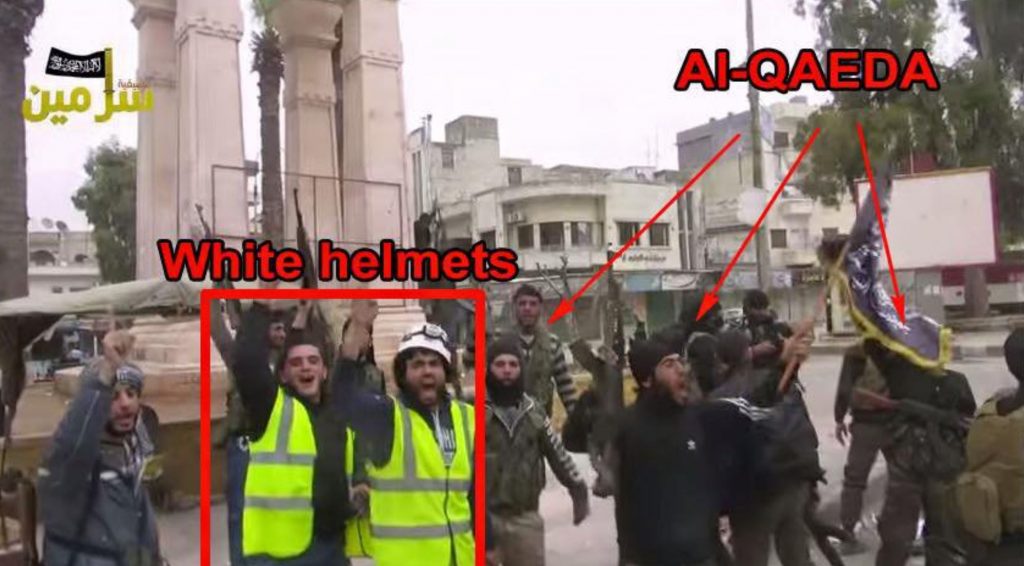
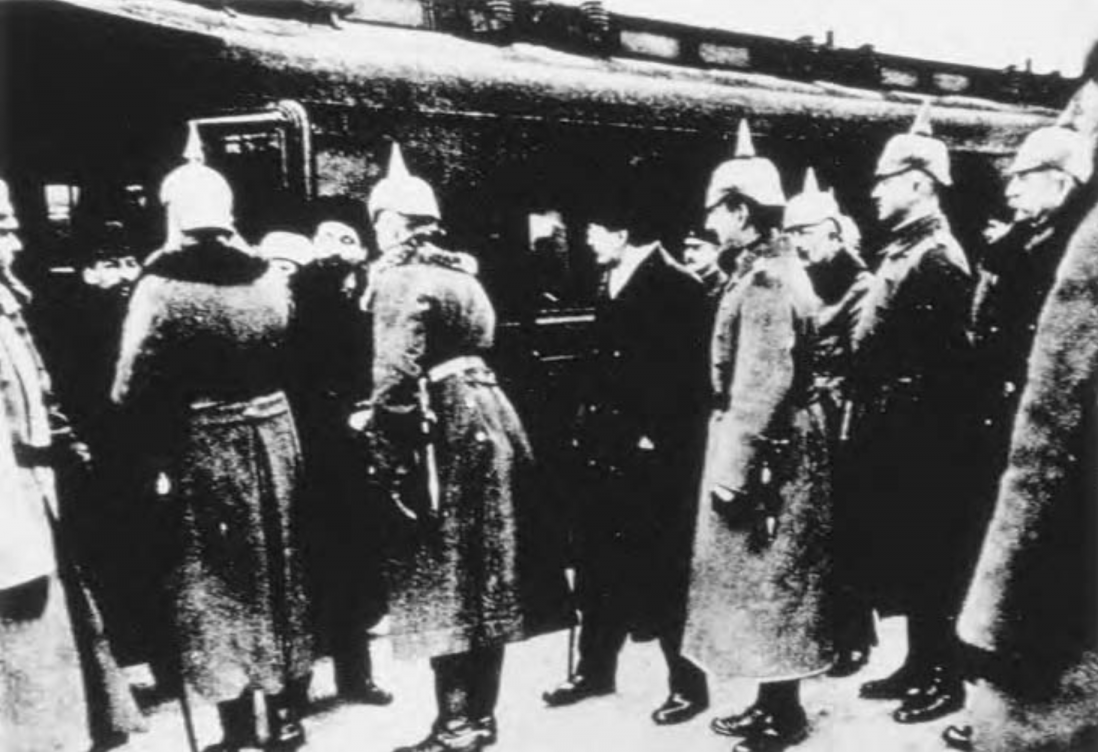



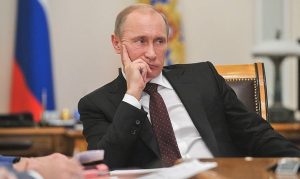
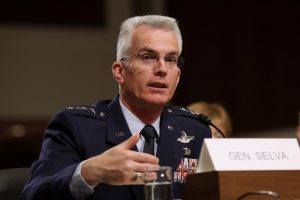
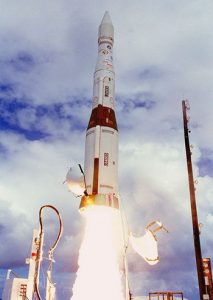
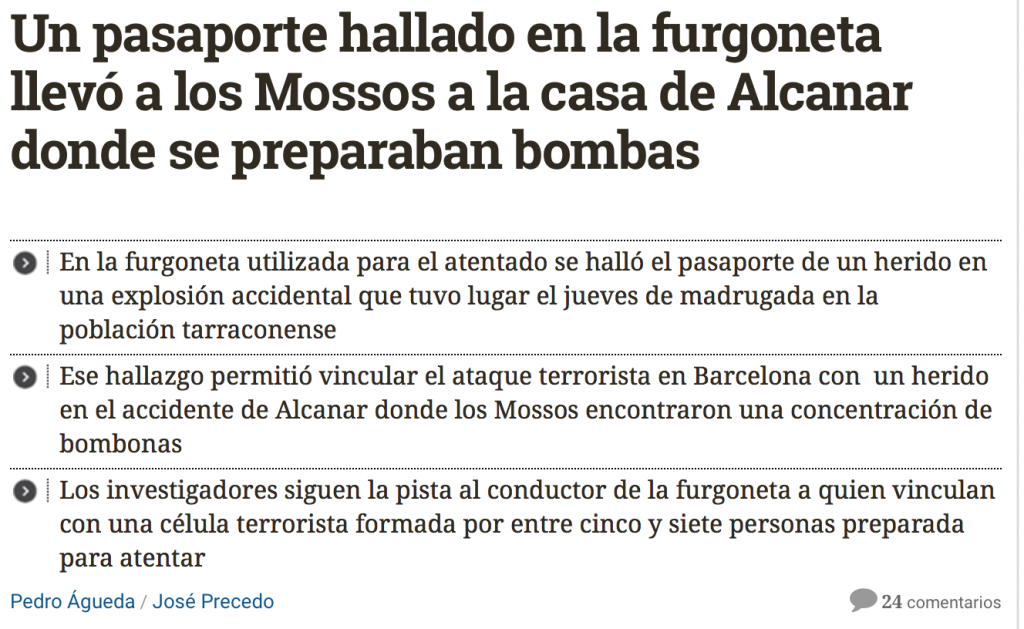
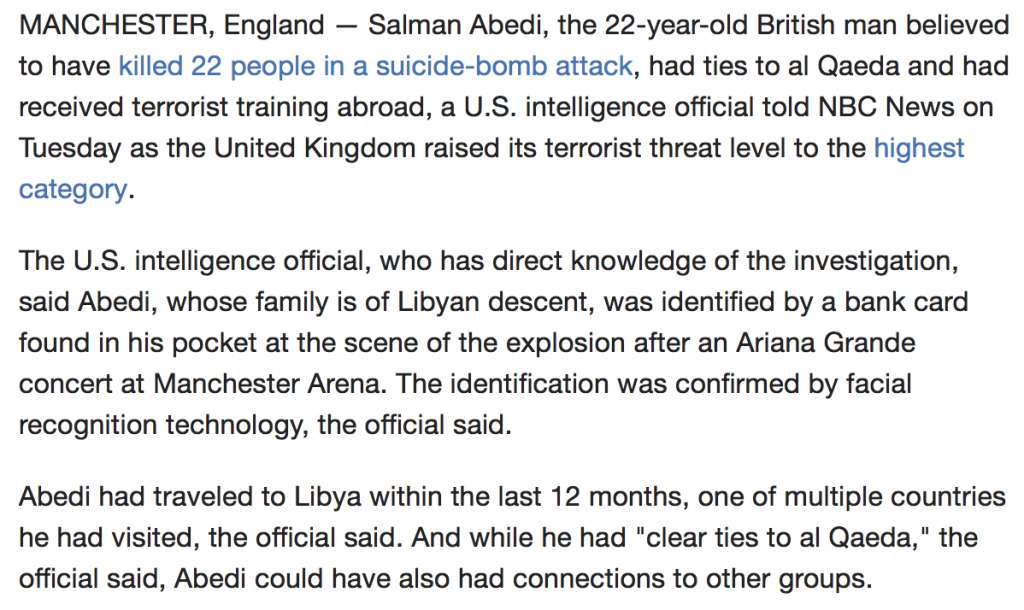

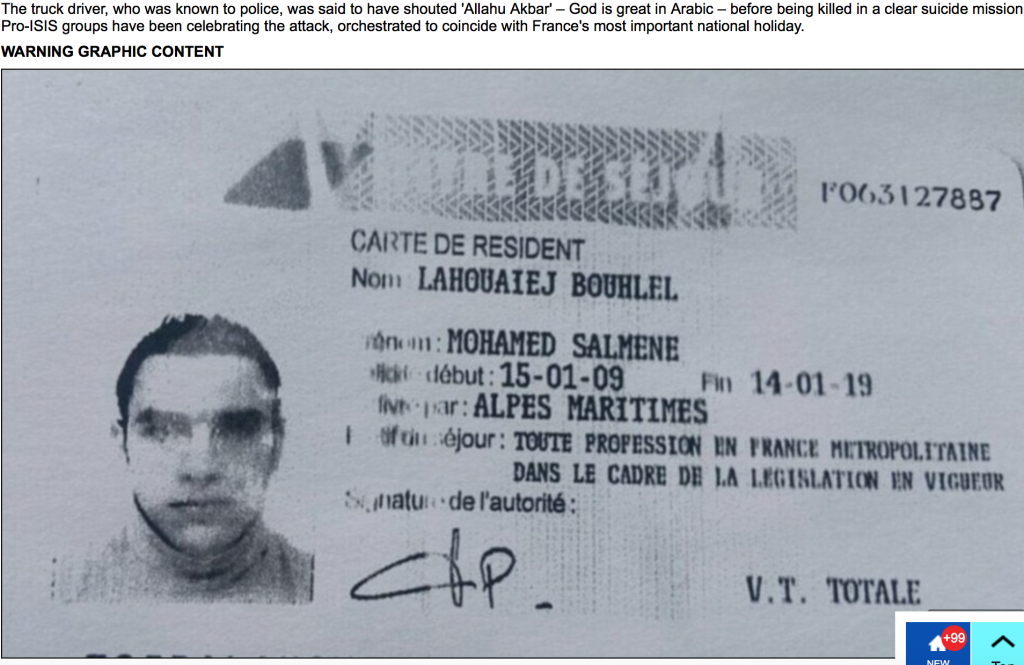
 In the context of the enquiry about the Paris massacres, a Syrian passport (image right) was found next to one of the kamikaze bombers of Stade de France. After being pointed out as responsible for the attacks by President Hollande, ‘the Islamic State’ claimed that they had engineered the onslaught. The French executive, that had already stated tht they wanted to take action in Syria allegedly against ISIS, but actually against Bachar El Assad, who ‘has to go’, sees in this a significant clue that comfort their military expedition.
In the context of the enquiry about the Paris massacres, a Syrian passport (image right) was found next to one of the kamikaze bombers of Stade de France. After being pointed out as responsible for the attacks by President Hollande, ‘the Islamic State’ claimed that they had engineered the onslaught. The French executive, that had already stated tht they wanted to take action in Syria allegedly against ISIS, but actually against Bachar El Assad, who ‘has to go’, sees in this a significant clue that comfort their military expedition.